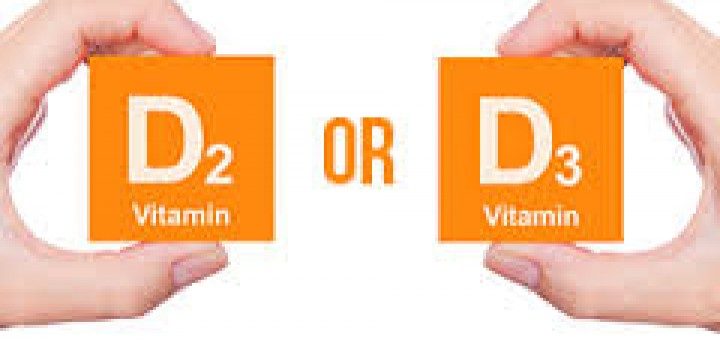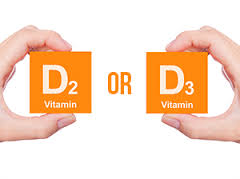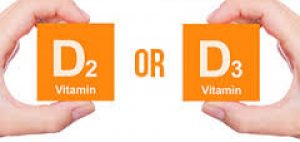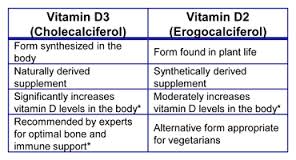New Health Blog Post – Vitamin D3 vs Vitamin D2: Are You Getting the Right One?

3 John 1:2 Beloved, I wish above all things that thou mayest prosper and be in health, even as thy soul prospereth.
Go To Health Blog
For anyone first reading the Health and Nutrition Update, please read this first: Your Health.
Also, please go to God’s Health System and subscribe to receive the updates.
Always remember that you are in charge of your health and not the doctors. Do not put your life in their hands without first seeking God and His health system.
Commentary
This post originally was published on July 1, 2014 but the information is still very relevant. In fact it’s so important that we thought it was worth running again.
There are an increasing number of studies touting the effectiveness of Vitamin D for combating illnesses of many different types. After seeing a number of such articles, anyone concerned about his health will add that to the supplements he’s taking because it has such tremendous benefits for comparatively little cost. But is it enough to just go to the store and purchase vitamin D, or is there more we need to know to obtain those health benefits? Unfortunately, there is more to it than just buying some vitamin D capsules, and if we’re not aware of that, we’re most likely wasting our time and our money – and doing little to improve our health.
There are two types of vitamin D, D2 and D3. Only D3 is readily absorbed and useful in the human body, Yet most of the products fortified with vitamin D contain D2. Milk and orange juice come to mind immediately, and if we think we’re getting enough because we spend time in the sun regularly and buy fortified drinks, then we’re sadly mistaken. In fact, studies show that most American adults are woefully deficient in Vitamin D, even if they supplement it because most of the vitamin D sold over the counter is D2, which is plant-based and made from fungus.
In contrast, D3 comes from two sources, lanolin or fish oil. The articles below explain why D3 is what we need to take to get all of those health benefits we’re reading about. They also discuss how each type is made, what it does or doesn’t do, and how much we really should be taking. The government recommendations are so woefully low that they’d be almost laughable were the consequences not so serious. But it would be almost as effective to drink water as to take the RDA (recommended daily allowance) set by them. So read through the articles below and make sure that next time you purchase vitamin D, you get one that is made from lanolin so that it contains D3. They are more expensive, and there are not a lot of varieties on the market, but they are there and if you shop carefully, you’ll find them. You’re not saving much if you buy the cheaper D2 vitamins but don’t get any benefits from them.
Vitamin D3 vs Vitamin D2: Are You Getting the Right One?
There are 15 new articles posted, four of which have links and descriptions below.
Vitamin D3 vs Vitamin D2: Are You Getting the Right One?
“Vitamin D3, Vitamin D2. They’re the same thing right? Well, no. Vitamin D [a]bsorption is very much affected by which type of Vitamin D that you are taking. Vitamin D comes in two different formulations. Vitamin D2, also called ergocalciferol; and Vitamin D 3, also called cholecalciferol.
Vitamin D2 was the first synthetic form of Vitamin D and is the form of vitamin d in all Vegan Vitamin D. It was used, and still is in many cases, to fortify foods, make some Vitamin D supplements and is the basis for ALL Prescription Vitamin D. Most over the counter Vitamin D supplements and ALL prescription Vitamin D supplements contain Vitamin D2.
But it is a far inferior form of Vitamin D that does not get absorbed into the body well. This is a phenomenon called bioavailability- or in this case simply Vitamin D Absorption. Many vitamins are not necessarily bioavailable, therefore taking vitamins does not mean that you actually ABSORB the vitamin.
If it were simply an issue of worse absorption, then you could simply take more to do the same job. But unfortunately, vitamin D 2 just doesn’t DO the job that vitamin D is Supposed to do.”
Vitamin D Supplements: Does the Source Matter?
“Vitamin D3 is derived from two places, either fish oil or sheep’s lanolin. Lanolin is a waxy substance that is secreted by glands found in a sheep’s skin. In order to remove the lanolin from wool, the wool is rolled or squeezed, pushing out a yellowish waxy substance. In order to make vitamin D3, the lanolin must be purified which results in…the same precursor of vitamin D found in our skin.
Vitamin D from fish oil comes from the skin of fatty fish such as salmon and tuna which naturally contain vitamin D. It may also be produced from cod liver oil, which is extremely high in vitamin D, containing 1360 IU per 1 tablespoon serving… Fish naturally store vitamin D in in their liver and fatty tissues. Fish do not make the vitamin themselves but actually get the vitamin from the plankton they eat. Certain fish oil may be very high in vitamin A, a fat soluble vitamin, making it important to read the label to avoid vitamin A toxicity.
The other danger in vitamin D from fish oil is its mercury content… Once in the water, bacteria transform mercury into soluble, toxic methylmercury, which fish absorb. When we eat fish high in methylmercury, or consume the vitamin D in fish oil derived from these fish, the toxin accumulates in the bloodstream… Nearly all fish contain trace amounts of methylmercury. Vitamin D derived from sheep lanolin contain no such mercury risk.”
“Lanolin, the oil found on sheepskin, is a concentrated source of 7-dehdrocholesterol. When it is irradiated using UVB lamps, it creates a chemical process nearly identical to that which takes place in human skin.
Because it is a fat-soluble vitamin, it is frequently sold in a softgel form that enables faster absorption. Other manufacturers may sell D3 as a tablet or dry capsule. Concentrations range tremendously between products: each capsule may contain a dose of between 50 and 10,000 international units per serving.”
Taking Oral Vitamin D? Avoid Making This Serious Mistake The two different types of vitamin D are not interchangeable. It’s not that D2 is less potent; it’s that it’s very different from vitamin D3, and taking D2 could hurt you more than help you.
“Drisdol is a synthetic form of vitamin D2—made by irradiating fungus and plant matter—and is the form of vitamin D typically prescribed by doctors.
This is not the type produced by your body in response to sun or safe tanning bed exposure, which is vitamin D3.
Some 40 leading vitamin D experts from around the world currently agree that there’s no specific dosage level at which “magic” happens; rather the most important factor when it comes to vitamin D is your serum level (the level of vitamin D in your blood). So you really should be taking whatever dosage required to obtain a therapeutic level of vitamin D in your blood.
…it appears as though most adults need about 8,000 IU’s of vitamin D a day in order to raise their serum levels above 40 ng/ml.4 For children, many experts agree they need about 35 IU’s of vitamin D per pound of body weight.”







